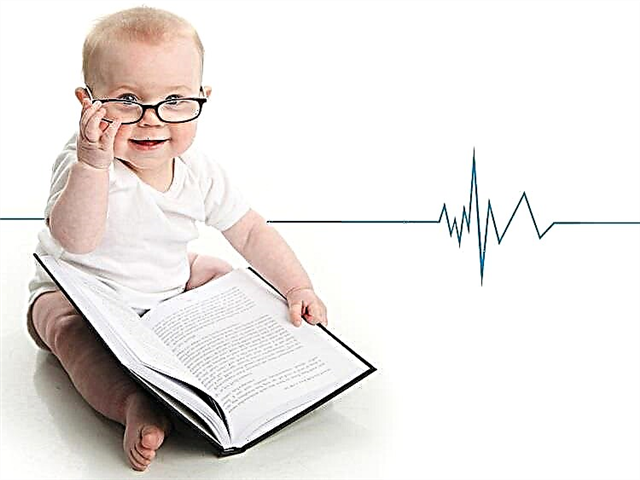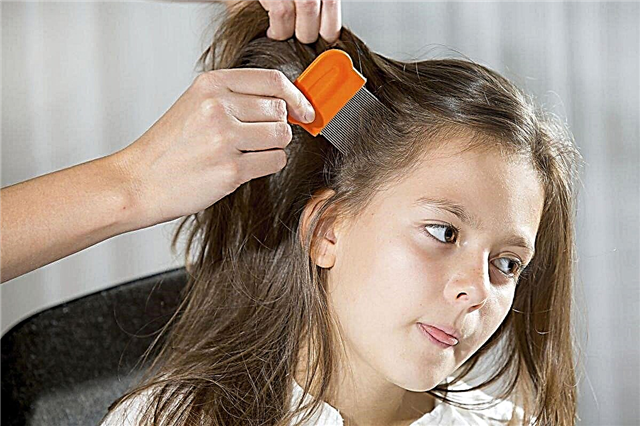Toys on the floor in the nursery, in the hall, in the corridor and even on the kitchen table ... How to teach a child to clean up toys after themselves, we will figure it out today in the article.
It is impossible to imagine a full-fledged childhood without toys. And given the rich modern assortment of toys for children, parents, grandparents, relatives and family friends pamper the child to the fullest. And soon the nursery doesn't have enough drawers, baskets and free corners to accommodate all these toys. Cleaning up rubble in the evenings turns into an exhausting ordeal for all family members. But does the kid need a "wagon" of toys and how to involve him in self-cleaning after his games? The main rule is to teach the baby to order from an early age.

Games at 2-3 years old: how many and what toys a child needs
The child's acquaintance with the world around him occurs through objects that he can see, touch, smell and even taste. At an early age, this is best done with the help of toys, among which there are many developmental and educational ones. Therefore, their choice should be taken seriously, like buying the baby's first encyclopedia, which will open the world to him. A modern toy should not only look aesthetically pleasing, bright and interesting, but also captivate, develop and enrich with knowledge and skills.
At the age of 2-3, the child already has the first play experience. He himself determines the interest in a particular toy, knows what to do with it and what result can be obtained from using it. For example, feed the doll with a toy lunch, or play with a teddy bear at school, or place the car in its place in the garage. Children have their "favorites", and even pays no attention to some toys, despite their brightness, multifunctionality and developmental component. Babies are all different, therefore, what is interesting to one, the other may not be attracted at all. But you need to buy any toy, clearly understanding what exactly it develops.
What is better to choose for a child 2-3 years old:
- it is excellent to develop logic with the help of cubes, inserts and nesting dolls;
- to improve fine motor skills and develop sensory experience, puzzles, constructors, mosaics, lacing, games with sand and water will help;
- the horizons are broadened by figures of animals, cards with images of representatives of flora and fauna, objects that are present in different spheres of life;
- social development is developed by doll houses, furniture, sets of dishes and toy food, household items, dolls;
- physically develop toys for active pastime: cars, wheelchairs, skittles, balls, bicycles;
- various musical toys improve hearing;
- positive emotions give fun: chickens that peck grain, tops or lumberjack bear cubs.
How many toys can be given to a 2-3 year old child at the same time

Psychologists say that too many toys make it difficult for a child to focus on one thing. His attention is scattered and concentration is absent, which often leads to irritability and unreasonable moods.
The correct choice of the variety and number of toys will help to develop concentration, attentiveness and perseverance from an early age. Therefore, the fewer toys a crumbs have at their disposal, the easier it is to occupy it and keep order in the house. So the kid himself experiments with actions with one toy and develops his imagination.
You can play in the outdoor sandbox with a spatula, scoop, bucket and molds all summer long, and the child will not get tired of the fun. After all, every time using standard tools and sand, you can create something new and interesting: highways, castles, cities, labyrinths, garages, roads, rivers, etc. Perhaps, at a certain stage, the baby needs a hint or physical assistance from elders. But by directing his thoughts and actions in the right direction, in the future he himself can easily orient himself in any game.
Do not overload the children's room with toys. Superfluous, boring and unclaimed - hide in the closet. And when the child gets bored of playing with those that are at his disposal, change them to those that were hidden. And so periodically make "updates" of stocks.
2-3 toys are enough for a child to play. And let others be kept in boxes and on shelves.
How to teach a 2-year-old to clean up toys after themselves
The kid played around, but does not want to put the scattered toys and games - a typical situation in most families. How to make him, how to teach him and not to remind him every time and not to accompany the process with explanations and even shouting?

If a child at 2 years old does not want to do something, this is a normal reaction. But this age can be used with benefit. It is ideal for instilling good habits.
To teach him independence and order, it is enough to follow the basic recommendations:
- the space in the nursery should be organized so that it is easy for the child to clean everything on his own. For toys, provide for comfortable, bright and interesting baskets, buckets, boxes that will stimulate the baby to put things in order;
- let the child know that each toy has its own place. Cars are supposed to stand in the garage, animals on a shelf, dolls in a house, and a designer in a box. And then any toy can always be easily found;
- clean up while playing. Without orders and shouts;
- set an example for your child and make cleaning a family ritual, sharing responsibilities for everyone;
- do not follow the lead of childish laziness. If he wants to play, let him remember that he will always have to clean up after himself at the end. But do not wait until the last. Otherwise, the child will get tired and whims with hysteria cannot be avoided;
- do not punish by cleaning. Make the process positive and fun, not payback for disobedience.
- praise for the work done - it's always nice and it's a great motivator
Never:
- do not order or demand;
- do not Cry;
- do not use physical force;
- do not clean instead of the child (but you can help);
- do not demand perfect cleaning;
- Don't give thanks for the cleaning with awards and prizes - verbal praise or bedtime stories are enough.
It is necessary to teach the kid not only to work, but to understand why to do it. And the sooner you start to instill the habit of cleaning up after yourself, the easier it will be for the child to become independent.
Loving mothers: How to teach a child to put away toys
Cleaning up in the nursery: 11 effective tips for parents of a 2-3 year old child
The kid does not want to clean up the scattered toys and you already lose heart? As mentioned above, the easiest way to teach a child is to do it in a playful way, taking into account his psychological characteristics, age and showing a little imagination.
- Role-playing games. Assign the baby the role of a snowblower driver and give the task to remove the snow (toys), and then take everything out of town (boxes, baskets, shelves and bedside tables). Or let the kid be the driver of the school bus, and the toys are his school passengers. Today his task is to take everyone to their homes (dolls to their houses).
- Quest. Create a map with multiple cities. Come up with a game using it and a clear sequence of actions. For example, in one city, a kid has to clear the sea (carpet) of garbage (toys), in another - to harvest (Lego), and in a third - to pick up parcels. This cleaning will turn into a fun adventure.
- Creativity. If your child loves to invent and be creative, together create cleaning tools from available tools. Make a flying carpet out of cardboard, paint it and let him carry toys to places.
- Family evening mini-cleanup. Keep your child company: together it’s easier and faster and more fun. The child collects toys, and you dust, sweep and mop the floor, and arrange large balls and bags in their places.
- We earn points. You cannot motivate cleaning with money, candy or gifts. But you can earn points for a completed task. Write down their number in a special notebook or stick stickers for each cleaning. Summarize at the end of the week. Use the collected points on a trip to a museum, an ice rink or a zoo.
- Competition. If you have more than one child, a team and competitive spirit will help with any task. This makes it easier to instill independence. May the one who cleans up the fastest get the reward of choosing a bedtime story.
- Escape toys. If none of the methods proved to be effective, collect all the toys and hide them away. When the child discovers the loss, start returning them one at a time, with the condition that after the game he will put it in its place. If the baby follows the instructions, then in the morning you can return the next toy. Explain that toys can only live in cleanliness, and when there is a mess around, they take offense and leave. To consolidate this principle, you can read the tale of Moidodyr together.
- Small houses. Make interesting storage for each toy. Paint the bedside table with multi-colored circles, decorate the basket with rhinestones and fabrics, make beautiful windows with curtains in the container. Before going to bed, the baby should put all his toys in their houses.
- Cleaning at speed. Divide the nursery in half, place two large containers at the end, and race to collect toys with your child. Try to succumb to the fumes, because your forces are not equal. And he will be pleased to win.
- Magic cleaning lady. Dress up your daughter as a fairy and give a magic wand. Let her save her dolls from the evil dragon by hiding them in place. And the boy can play the role of a policeman or a robot that protects the world from chaos.
- Packing. Challenge your kid to sort all toys by type, size, shape. For example, dolls in one box, cars in another, and plush toys in a third.
With these simple play tricks, cleaning can become a favorite pastime for your child, help avoid daily stress, and only have a positive impact on the upbringing and development of your baby.
- 6 life hacks for quick cleaning in the nursery
- How to store Lego parts: 10 simple tips
- How to teach your child to help around the house: 9 simple tips
- Why children break toys: how to react to parents
- We teach a child to order in the house, or how to raise an assistant
- Household chores that can be entrusted to a two-year-old child
Mom's school: How to teach a child to put away their toys, things and help us with household chores
Psychologist Dmitry Karpachev: How to teach a child to put away toys
How to teach a child to put away toys. I want to say right away that you will not like my answer. I will explain it, justifying why it should be so:



